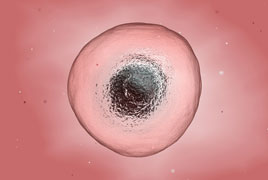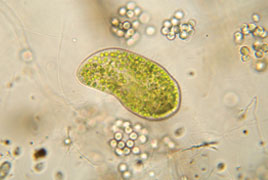Science



Take a close look at the world around you. What other living things share this world with us? You might say your dog or cat. Perhaps you would say the birds and squirrels. That's a good start, but think harder. What about the trees, flowers, and crops in the farmers' fields? Are they living? Take a look at a drop of water under a microscope. Is there anything living there? All living things have a few characteristics in common.
All living things…
- respond to stimuli.
- require energy.
- reproduce.
- are made of cells.
A daisy, an elm tree, a dog, and you all share these things in common. To some degree, all four of these characteristics will be touched upon in this content, but the focus of this lesson will be on cells, the building blocks of living things.
In this lesson, you will learn to…
- Identify cell structures and their functions.
- Understand the difference between plant and animal cells.
- Recognize how cells divide.
- Understand the process of photosynthesis.
- Understand how cells make use of energy to carry out their functions.
- Understand how cells differentiate and organize themselves into complex organisms.
Key Terms
- Anabolism - The constructive part of metabolism concerned especially with macromolecular synthesis.
- Catabolism - Destructive metabolism involving the release of energy and resulting in the breakdown of complex materials within the organism.
- Cytoplasm - The organized complex of inorganic and organic substances external to the nuclear membrane of a cell.
- Stimuli - An agent that directly influences the activity of a living organism or one of its parts.
- Mitosis - A process that takes place in the nucleus of a dividing cell, resulting in the formation of two new nuclei each having the same number of chromosomes as the parent nucleus.
- Nucleus - A cellular organelle that is essential to cell functions.
- Organism - A complex structure of interdependent and subordinate elements whose relations and properties are largely determined by their function in the whole.
- Organelle - A specialized cellular part.
- Photosynthesis - Formation of carbohydrates from carbon dioxide and a source of hydrogen (e.g., water) in the chlorophyll-containing tissues of plants exposed to light.
Sample Question
Red blood cells transport oxygen throughout the body. Pancreatic cells produce compounds such as insulin that the body needs. What do you assume muscle cells do?
DNA could be compared to what?


